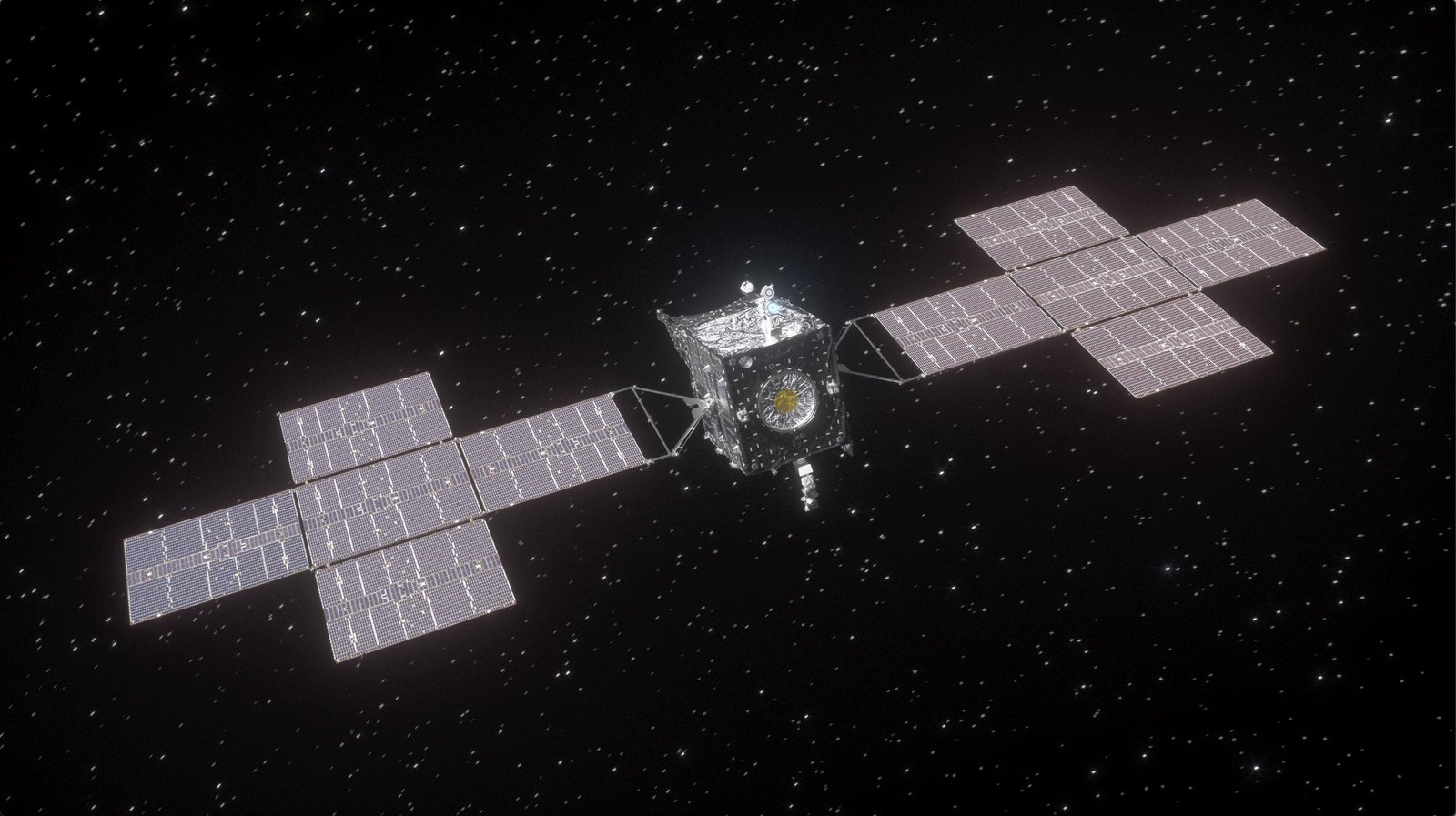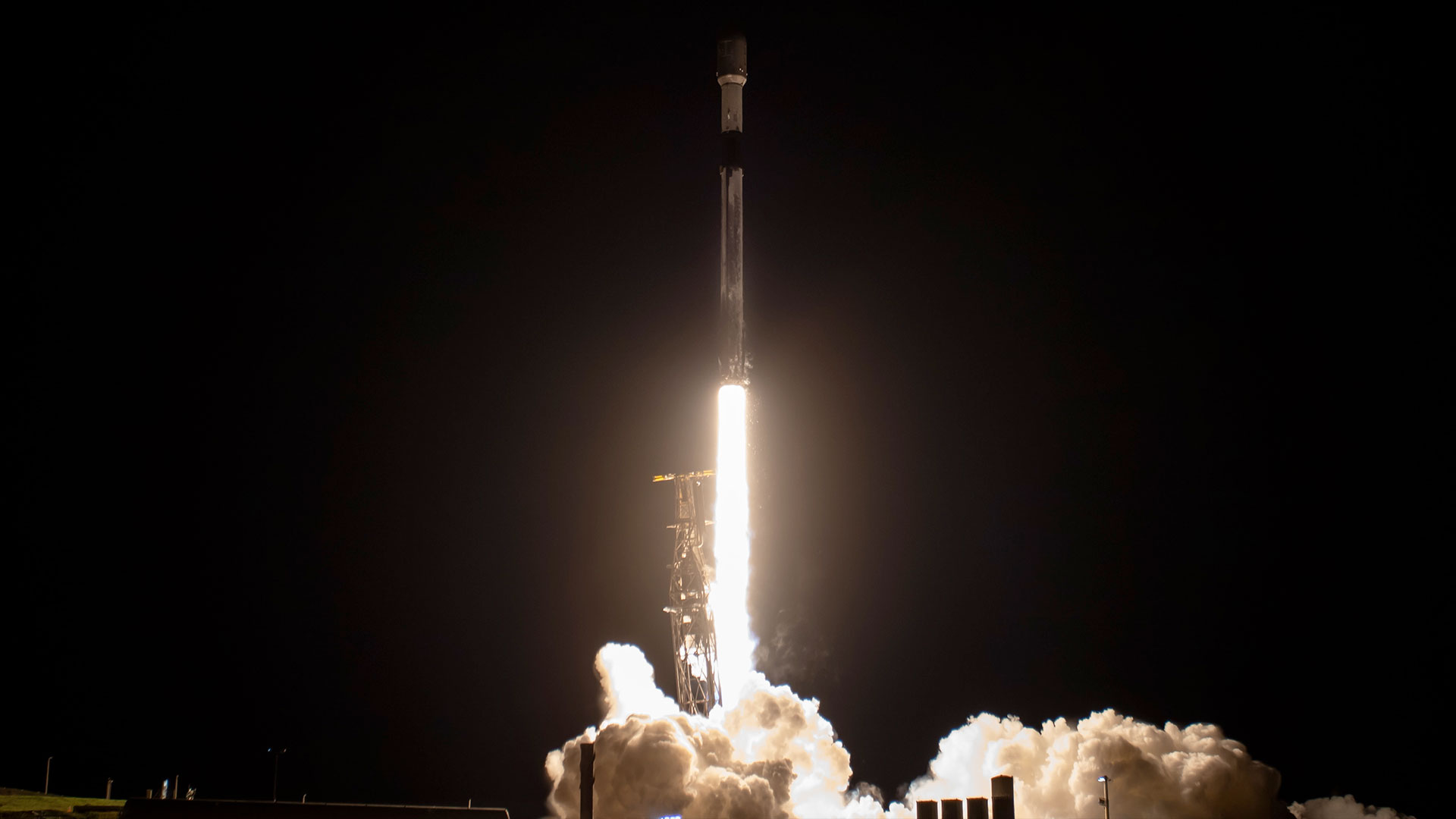NASA's Psyche spacecraft just fired a laser 10 million miles away in deep space

A NASA laser just fired successfully in a deep-space test.
On Nov. 14, NASA picked up a laser signal fired from an instrument that launched with the Psyche spacecraft, which is currently more than 10 million miles (16 million kilometers) from Earth and heading toward a mysterious metal asteroid. (The spacecraft is at more than 40 times the average distance of Earth's moon, and still voyaging afar.)
The moment marked the first successful test of NASA's Deep Space Optical Communications (DSOC) system, a next-generation comms link that sends information not by radio waves but instead by laser light. It's part of a series of tests NASA is doing to speed up communications in deep space, on different missions.
Related: NASA's Psyche asteroid mission will test next-gen laser communications in space
"Achieving first light is a tremendous achievement. The ground systems successfully detected the deep space laser photons from DSOC," Abi Biswas, the system's project technologist at NASA's Jet Propulsion Laboratory (JPL) in Southern California, said in an agency statement.
"And we were also able to send some data, meaning we were able to exchange 'bits of light' from and to deep space," Biswas added.
Other missions have tried out laser comms in Earth orbit or on the way to the moon and back, but DSOC gives laser communications its trickiest, most distant test yet. If it's successful, NASA officials expect that astronauts of the coming decades, bound for the moon or for Mars, may use laser light as their means of taking with ground control.
Breaking space news, the latest updates on rocket launches, skywatching events and more!
This DSOC test began in California, at JPL's Table Mountain Facility. There, in the hills outside Los Angeles, engineers switched on an uplink beacon, a near-infrared laser pointed in Psyche's direction. About 50 seconds later, a transceiver on Psyche received the laser and relayed its own laser signal back to Palomar Observatory, near San Diego.
The task requires astronomical precision, and automated guidance systems help aim Psyche's own laser. But should the test work out, the benefits are high: Because laser light has shorter wavelengths than radio waves, using optical light would allow space missions to send 10 to 100 times more information per unit time than they currently do.
The Nov. 14 test marked "first light" for DSOC, and engineers will continue to test the system as Psyche voyages to its namesake asteroid, which resides in the asteroid belt between Mars and Jupiter. Psyche should get there in 2029, then spend 29 months surveying the bizarre metallic world.

Rahul Rao is a graduate of New York University's SHERP and a freelance science writer, regularly covering physics, space, and infrastructure. His work has appeared in Gizmodo, Popular Science, Inverse, IEEE Spectrum, and Continuum. He enjoys riding trains for fun, and he has seen every surviving episode of Doctor Who. He holds a masters degree in science writing from New York University's Science, Health and Environmental Reporting Program (SHERP) and earned a bachelors degree from Vanderbilt University, where he studied English and physics.
